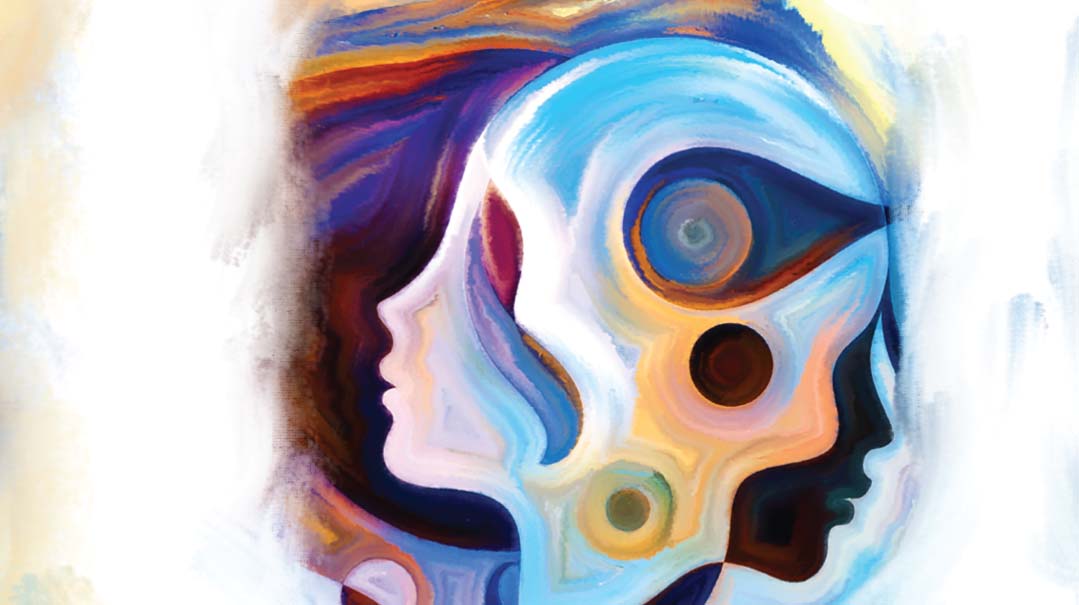A Plea For Redemption

Deeply entrenched in galus, there isn’t a person among us who hasn’t encountered a lost Jewish soul

N
ot everyone is a “klal person,” devoting large chunks of time to issues affecting the Jewish world at large. Perhaps some of us wish we were more involved in this holy work, yet recognize that time constraints, personality, or other factors limit our ability to participate. For those of us who wish we could do more, the next set of brachos in Shemoneh Esreh are reassuring.
The brachah “teka beshofar gadol l’cheiruseinu” represents a shift in the birchos bakashah of Shemoneh Esreh. In the previous six bakashos we focused inward, davening for our personal needs and for our loved ones. From this brachah on, we direct our focus outward, concentrating on the greater needs of Klal Yisrael. In these brachos we entreat Hashem for the greater good of our nation. In a very real sense, this offers us the daily opportunity to, “work for the klal.”
This brachah is our appeal for kibbutz galuyos, a fervent request for Hashem to gather the Jewish nation from remote corners of the earth to greet Mashiach. However, Rav Chaim Friedlander (Sifsei Chaim) adds another layer of intent: Geulah ruchanis, spiritual Geulah.
Spiritual Redemption
Every physical exile we’ve endured began with a lapsed connection to Hashem and His Torah. When we rejected our uniqueness as the Am Hanivchar, Hashem’s Chosen Nation, and ignored the responsibilities it engendered, we paved the way for our own demise. The direct result was exile from Eretz Yisrael and our dispersal throughout other nations.
We must address the cause of galus if we are to merit resolution. Therefore, in this brachah we daven for the spiritual redemption of those who are far from Yiddishkeit while also asking for their physical restoration to Klal Yisrael.
The opening bid in our brachah (teka beshofar gadol l’cheiruseinu…) comes directly from a pasuk in Yeshayahu (27:13): “V’hayah bayom hahu yitaka b’shofar gadol u’vau ha’ovdim b’eretz Ashur vehanidachim b’eretz Mitzrayim — and it will be on that day a great shofar will be blown and the lost ones of Ashur will come, as will the distant ones from Mitzrayim.”
The Mahari Kra differentiates between the words “ovdim,” those who are lost, and “nidachim,” those who are distant, and explains that there were two categories of Jews who were exiled by Sancheriv after the first Churban. The first was a cohort sent to Mitzrayim, a country south of Eretz Yisrael, who were far from home but still somewhat accessible. They are the “nidachim,” distant but still connected to some degree.
And then there were those lost souls sent to Ashur, a land so remote that they were considered “ovdim,” wholly lost.
Rashi adds that the Ashur exiles were the unfortunate ten shevatim banished to the other side of the Sambatyon, the notorious river that savagely churned and roiled for six days a week, deeming water passage impossible. Only on Shabbos would the river’s fierce activity subside. However, journeying over water on Shabbos is forbidden, except in the direst of lifesaving emergencies. Thus, thousands of years before air travel, the Jewish people on the other side of the Sambatyon were effectively lost to our nation. These are the ovdim, the lost ones of Ashur.
Occasionally we discover distant tribes whose peculiar rituals closely mimic halachah. Perhaps they’re remnants of these lost shevatim? Or consider the offspring of crypto Jews who survived for millennia lighting Shabbos candles in dark closets, but not quite understanding why. Are they also a vestige of our nation, lost over the interminable years of exile? We have no conclusive proof. Only when Mashiach arrives and they, too, answer the call of the “shofar gadol,” will we know the truth. They’re the ones we daven for in this brachah.
Almost at the Point of No Return
There is another faction of lost Jews, the “ovdim b’eretz Ashur” who we reference here. These Jews are so thoroughly integrated into the gentile world they have lost the most tenuous connection to their Jewish identity. They have none of the telling markers or practices that distinguish Jews from other nations, and at times are so thoroughly assimilated that they worship other gods. These Jews are immune to campus kiruv and Shabbos Project challah bakes; they don’t know enough to show up in the first place.
How are we to rescue them if they’re utterly ignorant of their provenance?
Rav Uri Weissblum (Ha’aras Hatefillah) explains that our intention in this brachah includes these Jews as well, our lost brothers who will return when the shofar gadol restores them to their heritage.
When we envision Mashiach’s arrival, the iconic shofar blast resonates in our collective imagination. However, what in fact is the shofar gadol of our brachah?
Metzudas Tzion, commenting on the pasuk in Yeshayahu, regards the shofar as a parable. He explains that the forgotten Jews will unite in Eretz Yisrael as if summoned by a great shofar blast.
However, the Pirkei D’Rabi Eliezer (31) reads the shofar gadol literally. The ram that replaced Yitzchak Avinu at Akeidas Yitzchak possessed asymmetrical horns. The smaller horn from the left side was used for the shofar blasts at Har Sinai.
The larger horn, a shofar gadol, will be used to unite the exiled Jews when Mashiach arrives. Avraham Avinu exhibited remarkable mesirus nefesh for his role in the Akeidah and his efforts didn’t go unrewarded. His actions lay the groundwork for the shofar blast that inaugurates our ultimate Geulah.
On Rosh Hashanah the call of the shofar rouses us to teshuvah, encouraging us to prevail over the yetzer hara that incited us to sin. The shofar blast of the Geulah will serve a similar purpose. Here the shofar’s mighty cry will mobilize the celestial power of tov (goodness) to overtake and ultimately vanquish the ra (evil) forever. The absence of spiritual evil, explains the Sifsei Chaim, will generate the requisite “geulah nafshis” that is a prelude to our physical redemption.
Our sensory experience at the time of the ultimate Geulah will be both an auditory and visual phenomenon. Not only will we be moved by the shofar gadol’s earth-shattering call, but Hashem will “sa nes l’kabeitz galuyoseinu,” perform outstanding miracles we will merit seeing.
Deeply entrenched in galus, there isn’t a person among us who hasn’t encountered a lost Jewish soul. These people are our Shabbos table guests, our long-lost cousins, and our colleagues. And sometimes they’re our closest of kin, people we deeply love.
Let’s harness the power of the klal, for the klal, and daven that the mighty shofar gadol tarry no longer.
Mrs. Elana Moskowitz has been teaching in seminaries for over 20 years.
(Originally featured in Family First, Issue 846)
Oops! We could not locate your form.


